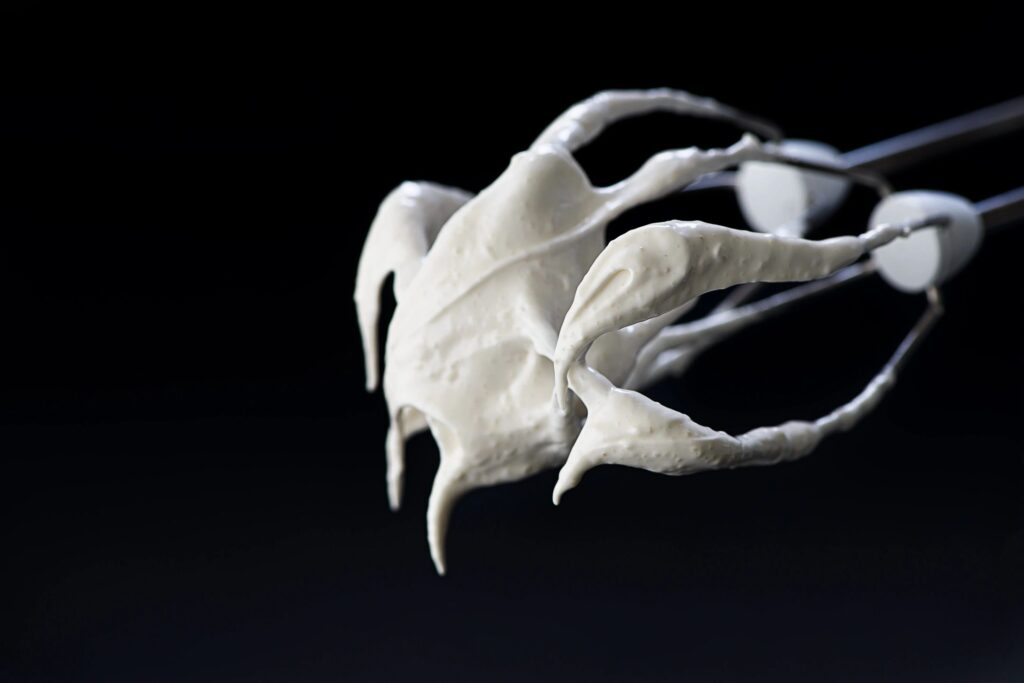As the curtain rises on our culinary symphony, it’s time to step into the spotlight and embark on the enchanting journey of making meringue. Picture yourself as the conductor, whisk in hand, ready to lead this delicate dance of whipped egg whites and sugar. The stage is set, the audience anticipates, and the ethereal clouds of meringue await creation.
Just like a skilled conductor guiding an orchestra, you’ll navigate the nuances of meringue-making, ensuring the perfect harmony of stiff peaks without succumbing to the challenges that may arise. Get ready to immerse yourself in the artistry of crafting this essential element that adds a cloud-like embrace to your desserts. The kitchen is your stage, and the recipe is your score—let the sweet symphony of meringue creation begin!
Harmonious Meringue-making Tips
- Clean and Dry Utensils: Before you start, ensure that your mixing bowl and beaters or whisk are clean, dry, and free from any traces of grease or fat. Even a small amount can sabotage your meringue.
- Room Temperature Eggs: Use eggs at room temperature. Cold eggs can affect the volume of your meringue.
- Fresh Eggs: Fresh eggs tend to create a more stable meringue. The proteins in fresh eggs are more robust and can trap air better.
- Separate Eggs Carefully: When separating egg whites, be meticulous. Any yolk in the whites can hinder the whipping process.
- Gradual Sugar Addition: Add sugar slowly and gradually while beating the egg whites. This allows the sugar to dissolve, creating a stable meringue.
- Stiff Peaks: Beat the egg whites until they form stiff peaks. Stiff peaks hold their shape well and won’t collapse.
- Avoid Overbeating: Be cautious not to overbeat the meringue. Overbeating can lead to a dry and grainy texture.
- Use Immediately: Once your meringue is ready, use it promptly. Waiting too long before baking can cause the peaks to deflate.
By following these tips, you’ll be better equipped to achieve and maintain those beautiful, lofty peaks in your meringue.
Thinking Outside the Whisk: Other Meringue Types
There are three primary types of meringue: French, Italian, and Swiss. Each type differs in the method of preparation and the ingredients used.
- French Meringue:
- Ingredients: Egg whites and granulated sugar.
- Preparation: Egg whites are whipped until soft peaks form, and then sugar is gradually added to create a glossy, stiff meringue.
- Italian Meringue:
- Ingredients: Egg whites, granulated sugar, and a sugar syrup (made by boiling sugar and water).
- Preparation: A sugar syrup is heated and poured over whipped egg whites while continuing to beat until a stable, glossy meringue is achieved.
- Swiss Meringue:
- Ingredients: Egg whites and granulated sugar.
- Preparation: Egg whites and sugar are combined over a double boiler and heated, then whipped until stiff peaks form. This method results in a stable and smooth meringue.
Each type has its unique characteristics and is suitable for different applications in baking and pastry. The choice of meringue often depends on the specific recipe and desired outcome. Either way, the journey in mastering meringue peaks is an adventure in itself enjoy every meringue bubble!
In the grand symphony of baking and pastry, each type of meringue boasts distinct characteristics tailored for different roles. The choice of meringue is a nuanced decision, guided by the specific recipe and the desired culinary crescendo. Regardless of the path you tread, the expedition to master meringue peaks unfolds as a dramatic adventure—savor each moment, relish every bubble!
Foolproof Meringue Recipe
Equipment
- 1 Stand mixer If you don't have a stand mixer, a hand mixer will do. However, if you're up for a challenge, grab a hand whisk.
Materials
- 4 large egg whites at room temperature
- 1 cup granulated sugar
- 1 tsp cornstarch
- 1 tsp white vinegar***
- 1/2 tsp vanilla extract optional
Instructions
- Preheat your oven to 300°F (150°C). Line a baking sheet with parchment paper.
- Ensure that your mixing bowl and beaters are completely clean and free of any grease. Even a speck of fat can sabotage the meringue performance.
- Let your egg whites rest at room temperature for about 30 minutes. This helps them whip up into a more stable foam.
- Gradually add sugar to the egg whites, one tablespoon at a time. Beat well after each addition until the sugar is fully incorporated. The mixture should be glossy, and stiff peaks should form.
- Mix in cornstarch, white vinegar, and vanilla extract. These ingredients add stability and flavor to your meringue.
- Continue beating until the meringue reaches stiff peaks. You should be able to turn the bowl upside down without anything moving.
- Spoon or pipe the meringue onto the prepared baking sheet. Create your desired shapes, whether it’s a pavlova nest or individual meringue kisses.
- Bake in the preheated oven for about 45-60 minutes or until the meringue is crisp on the outside and marshmallow-soft on the inside.
- Allow the meringue to cool completely in the oven. This prevents any sudden temperature changes that could cause it to collapse.
- OPTIONAL: If you're feeling extra, serve your meringue with whipped cream and fresh fruit for a delightful encore.
Notes
- If you’re using it to top a pie, it should be sufficient for a standard-sized pie (9-inch (23 cm) pie dish).
- If you plan to use the meringue for individual servings or smaller desserts, the quantity might be more than needed.

